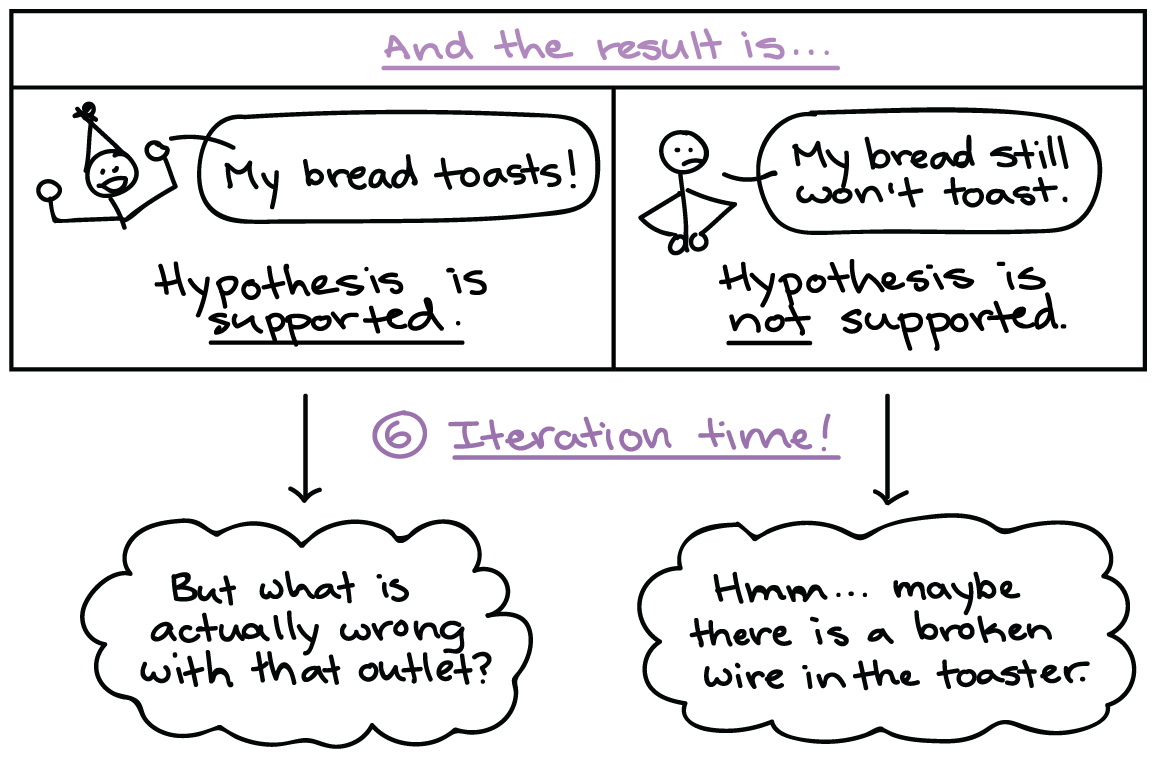The scientific method
How the scientific method is used to test a hypothesis.
Introduction
A biology investigation usually starts with an observation—that is, something that catches the biologist’s attention. For instance, a cancer biologist might notice that a certain kind of cancer can't be treated with chemotherapy and wonder why this is the case. A marine ecologist, seeing that the coral reefs of her field sites are bleaching—turning white—might set out to understand why.
How do biologists follow up on these observations? How can you follow up on your own observations of the natural world? In this article, we’ll walk through the scientific method, a logical problem-solving approach used by biologists and many other scientists.
The scientific method
At the core of biology and other sciences lies a problem-solving approach called the scientific method. The scientific method has five basic steps, plus one feedback step:
- Make an observation.
- Ask a question.
- Form a hypothesis, or testable explanation.
- Make a prediction based on the hypothesis.
- Test the prediction.
- Iterate: use the results to make new hypotheses or predictions.
The scientific method is used in all sciences—including chemistry, physics, geology, and psychology. The scientists in these fields ask different questions and perform different tests. However, they use the same core approach to find answers that are logical and supported by evidence.
Scientific method example: Failure to toast
Let's build some intuition for the scientific method by applying its steps to a practical problem from everyday life.
1. Make an observation.
Let's suppose that you get two slices of bread, put them into the toaster, and press the button. However, your bread does not toast.
2. Ask a question.
Why didn't my bread get toasted?
3. Propose a hypothesis.
A hypothesis is a potential answer to the question, one that can somehow be tested. For example, our hypothesis in this case could be that the toast didn't toast because the electrical outlet is broken.
This hypothesis is not necessarily the right explanation. Instead, it's a possible explanation that we can test to see if it is likely correct, or if we need to make a new hypothesis.
4. Make predictions.
A prediction is an outcome we'd expect to see if the hypothesis is correct. In this case, we might predict that if the electrical outlet is broken, then plugging the toaster into a different outlet should fix the problem.
5. Test the predictions.
To test the hypothesis, we need to make an observation or perform an experiment associated with the prediction. For instance, in this case, we would plug the toaster into a different outlet and see if it toasts.
- If the toaster does toast, then the hypothesis is supported—likely correct.
- If the toaster doesn't toast, then the hypothesis is not supported—likely wrong.
The results of a test may either support or contradict—oppose—a hypothesis. Results that support a hypothesis can't conclusively prove that it's correct, but they do mean it's likely to be correct. On the other hand, if results contradict a hypothesis, that hypothesis is probably not correct. Unless there was a flaw in the test—a possibility we should always consider—a contradictory result means that we can discard the hypothesis and look for a new one.
6. Iterate.
The last step of the scientific method is to reflect on our results and use them to guide our next steps.
- If the hypothesis was supported, we might do additional tests to confirm it, or revise it to be more specific. For instance, we might investigate why the outlet is broken.
- If the hypothesis was not supported, we would come up with a new hypothesis. For instance, the next hypothesis might be that there's a broken wire in the toaster.
In most cases, the scientific method is an iterative process. In other words, it's a cycle rather than a straight line. The result of one go-round becomes feedback that improves the next round of question asking.
How is the scientific method used by biologists?
This article uses a practical example to show how the scientific method works. However, you may be curious about how the scientific method is used in actual biology research. If so, check out the next article!
Controlled experiments: Learn how controlled experiments are used for hypothesis testing and what the alternatives are if an experiment isn't possible. See an example on coral bleaching!






Comments
Post a Comment